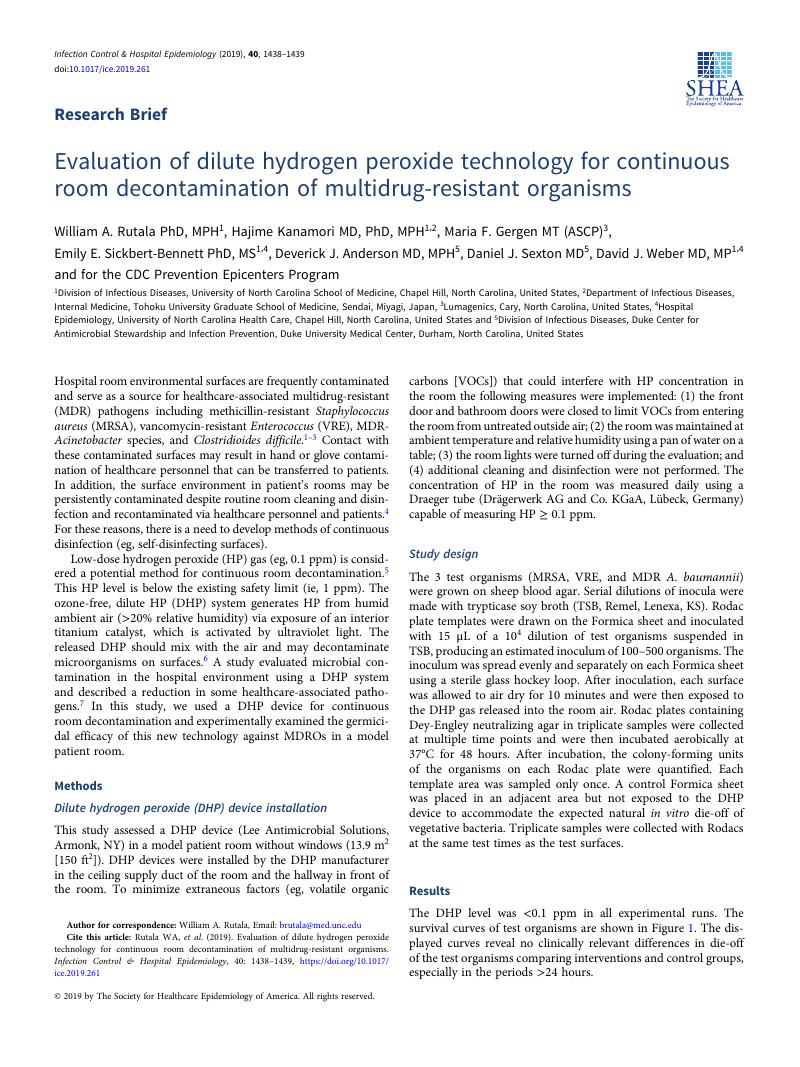Crossref Citations
This article has been cited by the following publications. This list is generated based on data provided by Crossref.
Rutala, William A.
Kanamori, Hajime
Gergen, Maria F.
Sickbert-Bennett, Emily E.
Anderson, Deverick J.
Sexton, Daniel J.
and
Weber, David J.
2020.
Reply to Eric Schlote regarding “Evaluation of dilute hydrogen peroxide technology for continuous room decontamination of multidrug-resistant organisms”.
Infection Control & Hospital Epidemiology,
Vol. 41,
Issue. 6,
p.
738.
Schlote, Eric
2020.
Re: Evaluation of dilute hydrogen peroxide technology for continuous room decontamination of multidrug-resistant organisms.
Infection Control & Hospital Epidemiology,
Vol. 41,
Issue. 6,
p.
737.
Stein, Claudia
Lange, Isabel
Rödel, Jürgen
Pletz, Mathias W.
and
Kipp, Frank
2021.
Targeted Molecular Detection of Nosocomial Carbapenemase-Producing Gram-Negative Bacteria—On Near- and Distant-Patient Surfaces.
Microorganisms,
Vol. 9,
Issue. 6,
p.
1190.
Ramirez, Marilyn
Matheu, Laura
Gomez, Miguel
Chang, Alicia
Ferrolino, Jose
Mack, Ricardo
Antillon-Klussmann, Federico
and
Melgar, Mario
2021.
Effectiveness of dry hydrogen peroxide on reducing environmental microbial bioburden risk in a pediatric oncology intensive care unit.
American Journal of Infection Control,
Vol. 49,
Issue. 5,
p.
608.
Rutala, William A.
and
Weber, David J.
2021.
Disinfection and Sterilization in Health Care Facilities.
Infectious Disease Clinics of North America,
Vol. 35,
Issue. 3,
p.
575.
Donskey, Curtis J.
2023.
Continuous surface and air decontamination technologies: Current concepts and controversies.
American Journal of Infection Control,
Vol. 51,
Issue. 11,
p.
A144.
Rutala, William A.
Donskey, Curtis J.
and
Weber, David J.
2023.
Disinfection and sterilization: New technologies.
American Journal of Infection Control,
Vol. 51,
Issue. 11,
p.
A13.





